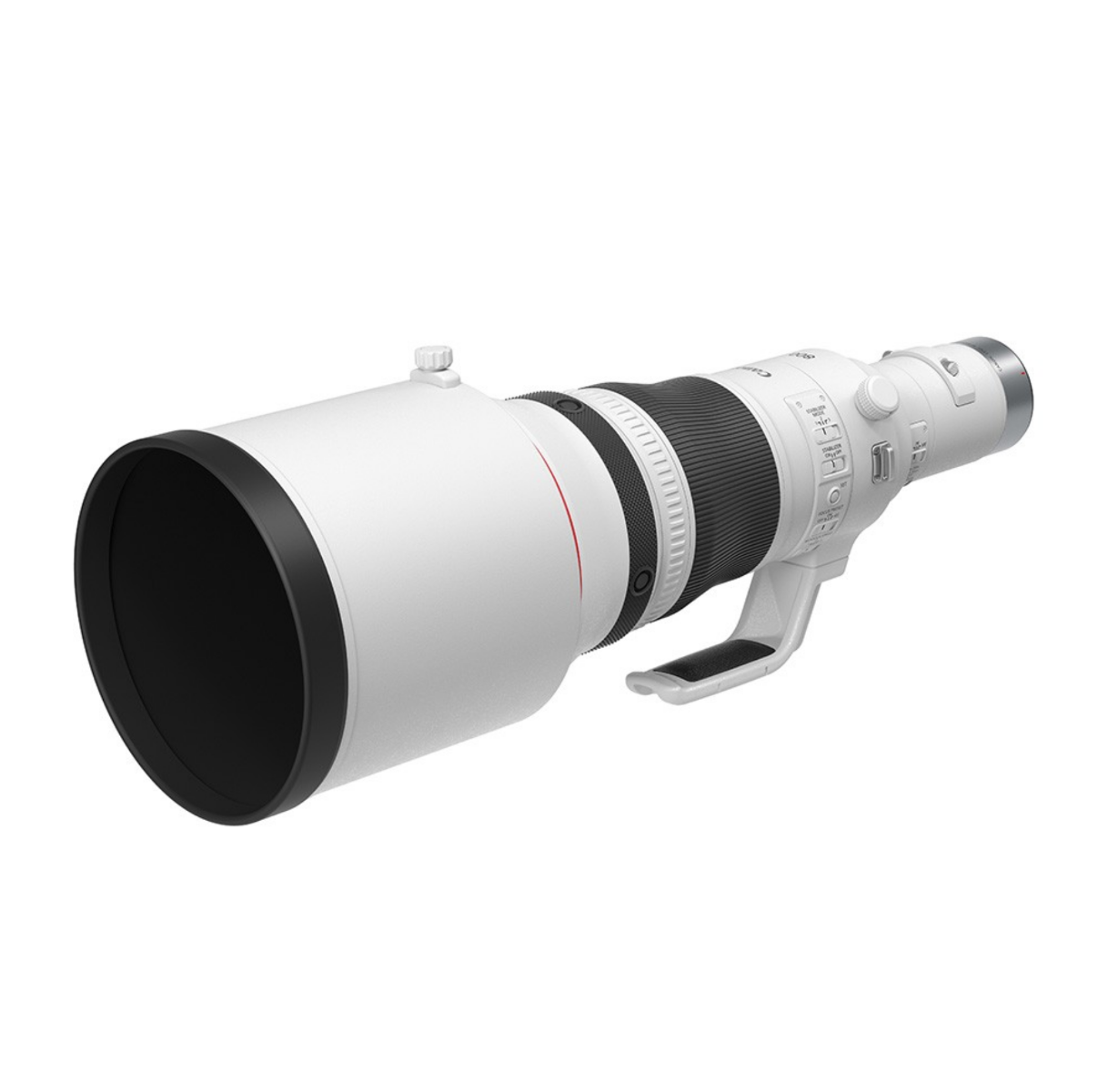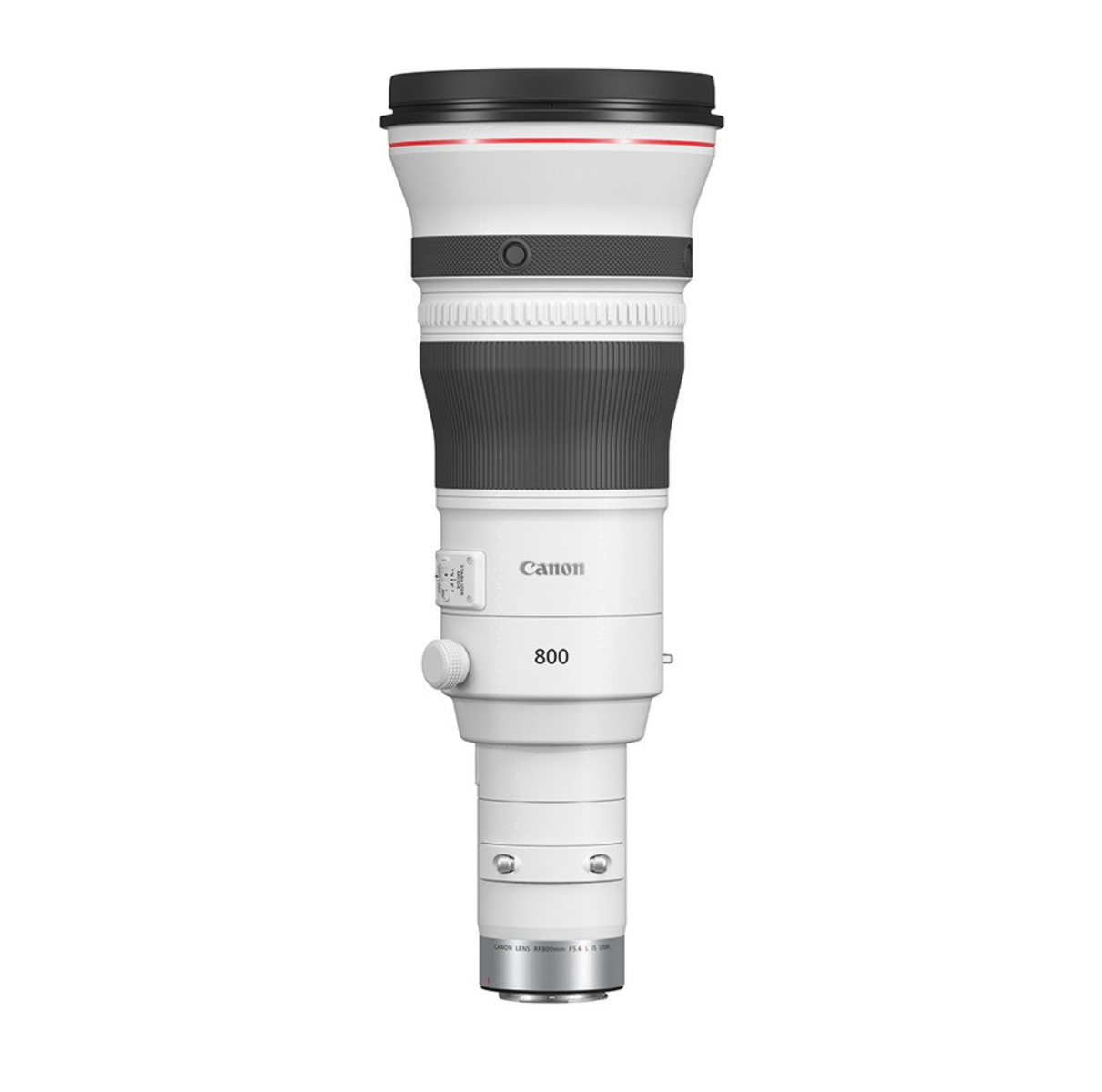Product Description
-
800mm super telephoto length
-
Compact lens with max. diameter x length of 163mm x 432mm
-
3.14kg in weight
-
Large f/5.6 aperture
-
4.5 stop Image Stabilization
-
Minimum focusing distance of 2.6m
Powerful reach from a portable lens. The Canon RF 800mm f5.6 L IS USM Lens pushes the boundaries of the RF lens range, these lenses set new standards for the category, with extreme magnification that offers unrivalled shooting of distant subjects. With a staggering 800mm focal length.
Intelligent design, achieving incredible optical performance and portability. Featuring an impressive Optical Image Stabilizer and wide apertures, these premium L-series RF lenses support a diverse range of photographers, from sport and wildlife to news gathering and surveillance – giving them kit that captures the action from far away, under exceptional circumstances and in extraordinary detail.
The RF 800mm F5.6L IS USM is built to impress. Working in tandem with the powerful Image Stabilization, the RF 800mm F5.6L IS USM provides up to 4.5 stop benefit to reduce shake and produce crisp detailed images. The 800mm lens also offers a large maximum f/5.6 aperture for this focal length, delivering excellent performance and image quality. In both models the 9-blade circular aperture can move in 1/8th steps, achieving smoother transitions between apertures during video recording.
The intelligently and newly designed optical system enables Canon to achieve these incredible focal lengths in a design that is smaller and lighter weight than traditional super telephoto lenses of this type.
Significantly reduced in size from their EF counterparts, the RF 800mm F5.6L IS USM is Canon’s lightest and shortest 800mm L-series lens yet weighing just over 3.1kg.
A super-telephoto RF lens - delivering incredible performance alongside outstanding design and handling.
Has a fast f/5.6 aperture and 4.5 stop Image Stabilizer1 - allowing for handheld shooting even in low light
Fluorite, UD and Super UD lens elements with advanced coatings - it sets new standards in optical excellence.
Try The Kit - Canon Test Drive

Canon Test Drive – Try Before You Buy with Free Next Day Delivery
Test selected Canon gear with a 48-hour free trial or hire for up to 7 days at a low cost. Book anytime via the 24/7 live system.
How it works:
-
Book your kit – Choose dates and reserve online.
-
Pay a refundable deposit – Fully refunded upon safe return.
-
Fast delivery – Get your gear quickly and securely.
-
Easy returns – Use pre-paid packaging for simple drop-off or collection.
Visit https://testdrive.trythekit.com to book yours now.
Payment & Security
Your payment information is processed securely. We do not store credit card details nor have access to your credit card information.


















